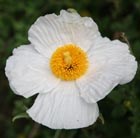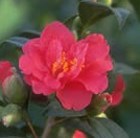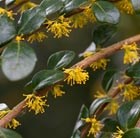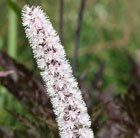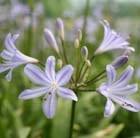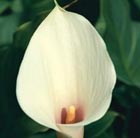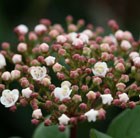New products at Crocus
by Sarah - November 4th, 2010.Filed under: Crocus, New Products.
Crocus just added these new lines
tree peony / tree paeony £19.99
Position: full sun or partial shadeSoil: fertile, moisture-retentive yet well-drainedRate of growth: vigorousFlowering period: April to MayHardiness: fully hardyPrized for their blowsy, glamorous blooms and glossy, deeply cut foliage, peonies are held in deep affection by many gardeners, despite their short flowering season and vulnerability to peony wilt in damp weather. It’s easy to see why. From the promise of early spring, when their red, mottled shoots push through bare earth and the handsome foliage unfurls, to early summer, when the huge flowers burst open from spherical red buds, peonies exert a fascination that few can resist. This tree peony has ruffled, deep purple sometimes scented flowers with yellow centres from late spring and early summer and handsome, deeply cut foliage. The flowers are massive, up to 15cm (6in) across, and this unusual tree peony makes a dramatic statement in a sunny protected border. Garden care: Protect from cold winds and early morning sun. Support the branches of young trees with canes. In early spring apply a top-dressing of a balanced, slow release fertiliser around the base of the plant and mulch well with well-rotted garden compost or manure. If the plant shows signs of collapse or the leaves become spotty, this may be a symptom of peony botrytis. Remove affected leaves immediately. In the autumn, cut off all the foliage and dispose of it to prevent reinfection the following spring. The older stems of tree peonies have a tendency to become brittle and snap, so cut these back to the ground in autumn every two or three years.
tree poppy £15.99
Position: full sunSoil: fertile, well-drained soilRate of growth: averageFlowering period: July to OctoberFlower colour: pure white with yellow centresOther features: handsome grey-green leavesHardiness: frost hardy (needs winter protection)This is an old cultivar (first dicovered in California in 1875), which has recently been ‘rediscovered’. The large flowers which can grow to the size of a saucer are the key feature of the plant. The petals have a crinkled look which resembles crepe paper, and these surround a fat yellow centre – they look a bit like fried eggs! They have a slight scent and if they are cut while still in bud, they will usually last for several days. Its lovely blue-grey foliage is a bonus. It is slow to become established, so you may need to be patient, but it is definitely worth the wait.Garden care: Cut back flower stems close to the base in March. Provide a deep dry mulch in the winter months for protection.
camellia £14.99
A lovely, dense camellia with brilliant scarlet flowers produced from late winter right through to late spring. This small growing variety making it ideal ifor growing in pots or for smaller gardens.Position: partial shade, but not east facingSoil: ericaeousUltimate size: 2m x 2mFlowers: bright red (January to April)Other features: evergreen foliageHardiness: fully hardy
white spruce £14.99
Beautiful, blue-green, needle-like leaves and oval, green summer cones maturing to brown. This slow-growing, broadly conical, evergreen conifer is an excellent specimen tree for a small, sunny garden. Best in moist, well-drained, neutral to acid soil, where necessary to maintain the plant’s distinctive, neat shape remove any misplaced branches in winter.Position: full sunSoil: deep, moist, well-drained, neutral to acid soilRate of growth: slow-growingOther features: ash-grey barkHardiness: fully hardyGarden care: Requires minimal pruning. Where necessary remove any misplaced or diseased branches in winter.
azara £14.99
Position: full sun, partial or full shadeSoil: fertile, moist, humus-rich soilRate of growth: averageFlowering period: February to AprilFlower colour: greenish-yellowOther features: pale mauve or white berries may form after hot summersHardiness: fully hardy (borderline)This upright evergreen plant can be grown as either a small tree or large shrub, but is especially effective when trained flat against a wall. It is tolerant of quite heavy shade, and this makes it invaluable for those tricky spots where little else will grow. Its very dark green leaves provide interest throughout the year and in late winter it produces tiny greenish-yellow flower clusters, which seem to be tucked into the join between the leaf and the stem. The flowers are far from showy, but they have a delicious vanilla scent that will fill the air with their perfume. The hardiest of the all the Azaras, it originates from woodland margins in Chile and Argentina, but will still appreciate some protection from icy winds in winter.Garden care: Cut back flowered shoots immediately after flowering if it outgrows its alloted space.
bugbane (syn. Cimicifuga) £9.99
Position: partial shadeSoil: moist, fertile, humus-rich soilRate of growth: average Flowering period: September and OctoberHardiness: fully hardyA dramatic, tall perennial, this is particularly useful plant because it comes into its own late in the season, when many flowers have finished, and because it thrives in damp shade. The slender, bottlebrush-like flowers emerge in autumn from their buds a pale pink, but deepen in colour as they age. When mature, they turn a rich, dark pink. The flowers are heavily scented and are a magnet for butterflies. The foliage emerges in spring with strong purple tones and gradually turns greener as it matures through the summer. Try it at the back of a border, between evergreens. Avoid removing the faded flowerheads since they provide an interesting silhouette in the winter garden.Garden care: Support using ring stakes well before the flowers appear. Cut spent flowers down to the ground in spring. Lift and divide congested colonies in late autumn or early spring.
African lily £9.99
Position: full sunSoil: fertile, moist, well-drained soil (or John Innes no. 3 compost for containers) Rate of growth: average Flowering period:July to SeptemberHardiness: half hardy (will need protection in winter)A variable, short variety that originates from New Zealand. It produces loose clusters of light blue, trumpet-shaped flowers that gently flare towards the ends. These appear above the glossy, strap-shaped, evergreen foliage in July and August.Garden care: Keep well-watered during the growing season, applying a balanced liquid fertiliser each month from spring until the plant flowers. In cold, exposed areas protect the crown of the plant with a deep, dry winter mulch, and avoid too much winter wet.
arum lily £9.99
Position: full sun or partial shadeSoil: humus-rich, moist soilRate of growth: average Flowering period: May to July Flower colour: white flushed pale pinkOther features: all parts may cause stomach ache if eaten and the sap can irritate the skinHardiness: borderline hardyOutstanding new variety with pink flushed, white hood-shaped flowers from late spring to summer. It has glossy dark green leaves and looks stunning planted in a clump. Great grown besides water as a marginal plant and can be left outside in most frost-prone areas if it is given a deep winter mulch.Garden care: Grow in moist soil or as a marginal plant in a basket with heavy loam soil in water 30cm (12in) deep. Mulch plants well in winter
laurustinus £7.99
Position: full sun or partial shadeSoil: moderately fertile, moist, well-drained soilRate of growth: averageFlowering period: December to AprilFlower colour: pink-flushed white flowersOther features: the fruits can cause a mild stomach-ache if ingestedHardiness: fully hardyThe dark green leaves of this laurustinus provide a dense backdrop against which ornamental plants can be more easily seen. A reliable evergreen shrub that thrives in sun or partial shade, it produces masses of pink-flushed white flowers, opening from dark pink buds from December to April, followed by a profusion of dark blue-black fruit.Garden care: Remove any over-vigorous shoots that threaten the shape of established specimens in early summer, cutting them well back to within the plant’s outline








